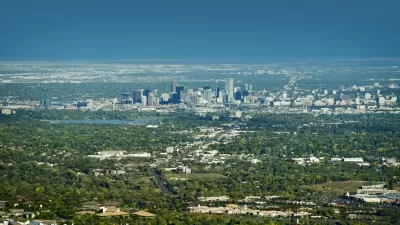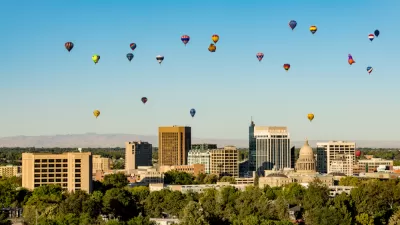Jed Kolko examines America's most diverse neighborhoods and finds that not only are they mostly located in the suburbs, but that they also have higher population growth and faster-rising home prices compared to less-diverse neighborhoods.
Using Census data on race and ethnicity, Kolko and his colleagues "measured diversity as the share of a metro area's or ZIP code's population in its largest racial or ethnic group: the smaller the share of the largest group, the more diverse the neighborhood is." They found that among the 100 largest metropolitan areas in America, San Jose is ranked the most diverse, followed by New York, Oakland, Houston, Honolulu, Fort Lauderdale, Orange County, Memphis, San Francisco, and Alburquerque. The least-diverse parts of the country are identified as New England and parts of Pennsylvania, Ohio and West Virginia, as seen on this diversity map.
As defined by ZIP codes, the most diverse neighborhoods were determined to be Broadmoor Hills and Song in Irving, TX; followed by Queens Village in Queens, NY; San Francisco's Treasure Island; Lakemont in Houston, TX; Wahiawa in Honolulu, HI; Kahuku in Honolulu, HI; Rainier View in Seattle, WA; Dorchester in Boston, MA; Kapolei in Hononlulu, HI; and South Natomas in Sacramento, CA. Kolko noted that these areas "are not the densest, most central or best-known neighborhoods" and that "the most diverse neighborhoods in America are located in metro areas that aren't especially diverse overall, like Seattle (67% White) and Boston (69% White)."
Moreover, the most expensive neighborhoods are not diverse and consist of largely White populations including New York's West Village (83%) and Beverly Hills (83%). The "hipster" neighborhoods are a little more mixed, says Kolko, such as Brooklyn's Williamsburg, Chicago's Wicker Park, San Francisco's Mission District, and Los Angeles's Silver Lake. He also points out that non-White neighborhoods don't equate to diversity as seen in Chicago's Englewood and two of Washington D.C.'s Anacostia neighborhoods (95% black); Boyle Heights in Los Angeles and Miami's Hialeah (95% Hispanic); and Monterey Park in Los Angeles and Flushing in Queens (70% Asian).
Based on U.S. Postal Service data, Kolko compared population growth and home prices between diverse neighborhoods and other neighborhoods. He found that "[t]he more diverse neighborhoods have both higher population growth and stronger price growth in the past year - and they're a bit more expensive to begin with," concluding that "Americans, therefore, are moving toward diverse neighborhoods."
"However," he warns, "growth in those neighborhoods could affect their diversity: if prices in diverse neighborhoods rise, lower-income residents may get priced out over time."
FULL STORY: Finding Diversity in America

Trump Administration Could Effectively End Housing Voucher Program
Federal officials are eyeing major cuts to the Section 8 program that helps millions of low-income households pay rent.

Planetizen Federal Action Tracker
A weekly monitor of how Trump’s orders and actions are impacting planners and planning in America.

The 120 Year Old Tiny Home Villages That Sheltered San Francisco’s Earthquake Refugees
More than a century ago, San Francisco mobilized to house thousands of residents displaced by the 1906 earthquake. Could their strategy offer a model for the present?

HSR Reaches Key Settlement in Northern California City
The state’s high-speed rail authority reached an agreement with Millbrae, a key city on the train’s proposed route to San Francisco.

Washington State Legislature Passes Parking Reform Bill
A bill that would limit parking requirements for new developments is headed to the governor’s desk.

Missouri Law Would Ban Protections for Housing Voucher Users
A state law seeks to overturn source-of-income discrimination bans passed by several Missouri cities.
Urban Design for Planners 1: Software Tools
This six-course series explores essential urban design concepts using open source software and equips planners with the tools they need to participate fully in the urban design process.
Planning for Universal Design
Learn the tools for implementing Universal Design in planning regulations.
Ada County Highway District
Clanton & Associates, Inc.
Jessamine County Fiscal Court
Institute for Housing and Urban Development Studies (IHS)
City of Grandview
Harvard GSD Executive Education
Toledo-Lucas County Plan Commissions
Salt Lake City
NYU Wagner Graduate School of Public Service




























